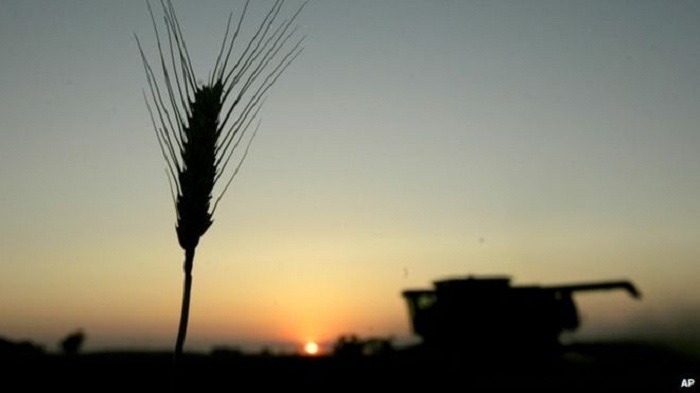The State of Food & Agriculture 2016 report said "business as usual" would leave millions at risk from hunger.
Last year, nations adopted a UN goal of ending hunger by 2030.
"The climate is changing, so agriculture must change too," explained Rob Voss, director of FAO`s Agricultural Development Economics division.
"We are saying that because agriculture is already very affected by the impacts of climate change, particularly the countries in the tropical zones.
"Also, agriculture is contributing itself to about one fifth of the global emissions of carbon dioxide and other greenhouse gases," Mr Voss, who headed the team that produced the FAO State of Food & Agriculture 2016 report, added.
"If we continue along the present pathways then we will not be able to [deliver] food security around the world and we will not be able to stabilise the climate."
Major changes
As a result, he told BBC News, there was a need for "major changes" to take place in the sector.
"One of the challenges is agriculture itself. As soon as we shovel the ground then we are already releasing greenhouse gas emissions. Also, as it is so dependent on water and quality of land, any impact from the change in climate has a direct impact."
Therefore, he said, the challenge was bearing these changes in mind and looking at ways to shift to a more sustainable footing.
"A lot of the technologies that are available that allow us to do things differently do face a number of hurdles, especially when it comes to smallholder farmers in developing countries.`
These include the cost of changing the way farmers produce their food; knowledge of shifting to the novel ways of farming; urbanisation; access to water.
In terms of making the change to deliver a robust global food system, Mr Voss said the report highlighted four steps that could be taken:
"First, put in the steps that would help farmers switch to more sustainable practices, such as more efficient use of fertilizers and using heat tolerant and drought resistant crop varieties."
He added that management systems, such as agroforestry - which places forestry cultivation around farmlands, would also be beneficial as it helps farmers build in great resilience against the impacts of climate change.
"Secondly, we need to work harder to increase the capacity of soils and forestry to sequestrate carbon. Deforestation and changes to land-use is one of the major sources of emissions from the sector.
"A third area where we can immediately start work on is to reduce food losses and waste. We estimate that about one third of the food we produce gets lost in the post-harvest process or gets wasted at the consumer end.
Rebalancing diets
"The fourth area, which is more challenging, is to try and do something about people`s diets. What we have been seeing around the world is a clear shift towards increasing demands for food products that put a lot more pressure on natural resources."
The report observed: "Rebalancing diets towards less animal-sourced foods would make an important contribution in this direction, with probable co-benefits for human health."
FAO director-general Jose Graziano da Silva said that the coming twelve months should be about "putting commitments into action", referring to the adoption of the UN Sustainable Development Goal of delivering "zero hunger" by 2030.
He also observed that agriculture was set to be one of the main topics for discussion at the forthcoming UN climate summit in Morocco in November.
"Climate change threatens all dimensions of food security," Mr Graziano da Silva warned.
"It will expose both urban and rural poor to higher and more volatile food prices. It will also affect food availability by reducing the productivity of crops, livestock and fisheries."
He stated: "Hunger, poverty and climate change need to be tackled together."
More about:
















































